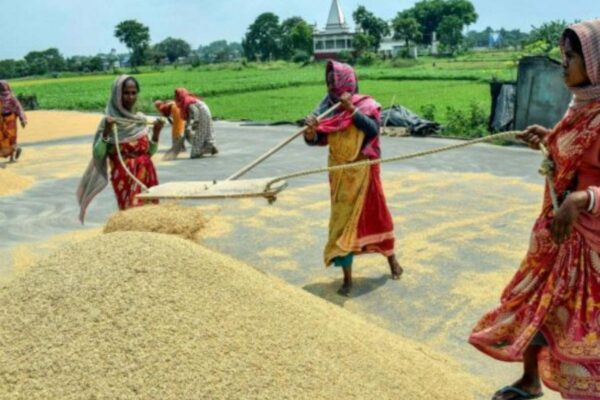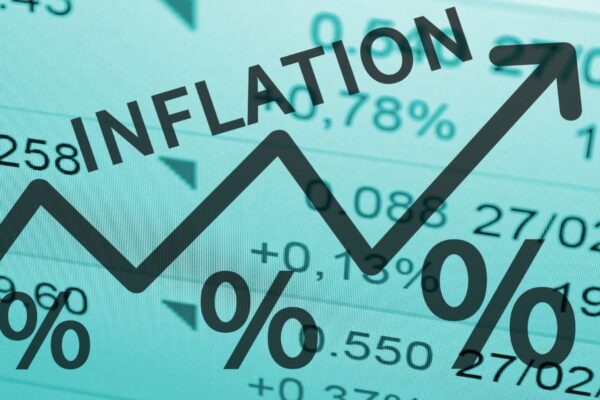India’s declining Rice production could lead to a fresh Food Catastrophe

India’s declining rice production could lead to a fresh food catastrophe.
At a time when food prices are increasing and inflation is rampant throughout the country, the output of the greatest rice exporter in the world is in jeopardy.
The rice-growing areas have shrunk to their smallest size in nearly three years as a result of India, by far the largest exporter in the world, experiencing a lack of rain in some parts. The world’s food supply may now face a new issue as a result of this.
India’s ability to grow rice is in jeopardy at a time when countries are battling with increasing food prices and severe inflation. The total area planted with rice has reduced by 13% so far this season as a result of a lack of rainfall in several regions, particularly West Bengal and Uttar Pradesh, which produce 25% of India’s output.

A decrease in rice production, according to traders, might make India’s fight against inflation more difficult and result in export limits. Such a choice will have a big impact on the billions of people who depend on basic food.
The government has already limited wheat and sugar exports from India, which accounts for 40% of the world’s rice trade, to safeguard food security and maintain local prices.
India’s rice prices have risen as a result of concerns over production. According to Mukesh Jain, a director of rice shipper Sponge Enterprises Pvt., prices of some types have climbed by more than 10% in the past two weeks in important growing regions like West Bengal, Odisha, and Chhattisgarh because of a lack of rain and increased demand from Bangladesh.
He claimed that by September, the price for free-on-board exports might rise to $400 per tonne from as low as $365 at the moment.
The majority of the world’s rice is produced and consumed in Asia, where it is crucial for the stability of the political and economic system. In contrast to the surge in wheat and corn prices following Russia’s invasion of Ukraine, rice prices have been regulated as a result of abundant production and stockpiles, helping to avert a deepening of the food crisis.
The outcome of the monsoon and the Indian rice harvest will be crucial. Some agricultural experts claim that it is still possible to sow additional crops to fill in some of the shortfalls. Normal rainfall is predicted for August through September, which might boost crop productivity.
Farmers are less cheerful. Grower Rajesh Kumar Singh, 54, claims that he was only able to plant rice on half of his seven acres (2.8 hectares) of land because of a lack of rain in June and July. “The position is hazardous,” he declared.
Rice prices are under pressure, says Himanshu, a lecturer at Jawaharlal Nehru University who goes by one name. He added that there is little chance of a rebound and that a drop in output puts inflation at risk because very little sowing happens after mid-July.
A fresh challenge in India’s battle against inflation may come from rice. The Reserve Bank of India continues to tolerate a 6% growth in consumer prices this year, which resulted in a sharp rise in interest rates.

The rupee’s decline this week has largely offset the impact of falling commodity prices, such as those for fuel and vegetable oils, so the central bank may increase borrowing costs further.
Sonal Varma, an economist at Nomura Holdings Inc., believes that ongoing agricultural production issues could result from persistent geographical variations in rainfall, which would subsequently hurt economic growth and inflation.
Top Customers
India exports rice to more than 100 nations, with its biggest customers including Bangladesh, China, Nepal, and certain Middle Eastern nations. For the state of global food security, there are some encouraging signals.
The US is anticipated to harvest a large amount of wheat in the coming weeks, while Ukraine has shipped its first grain export since Russia’s invasion.
Former secretary of India’s agriculture ministry Siraj Hussain believes that given the predicted distribution of paddy crop losses, the government should reconsider its plan to use rice as a source of ethanol.
India plans to enhance the production of ethanol using extra sugar and rice to reduce its fuel prices. The surge in food prices that has followed the conflict in Ukraine has sparked a “food vs. fuel” debate.
According to Hussain, it is now difficult to estimate the actual amount of production loss. At the current price, he continued, there is very little justification for allocating rice for ethanol production.




